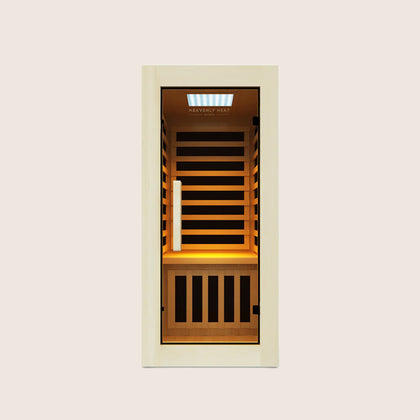Red Light Therapy for Wound Healing: Science and Benefits

Redness, swelling, persistent pain, or pus from a wound can be alarming, and ignoring these signs can lead to serious infections or delayed healing.
For many, slow recovery disrupts daily life, causes discomfort, and raises medical risks. Luckily, emerging therapies like red light therapy show promise in accelerating healing and reducing complications. Discover how science supports this innovative approach.
Table of contents
Key Takeaways
Stimulate Healing at the Cellular Level: Red light boosts cell activity and collagen production.
Reduce Inflammation: Therapy helps wounds recover faster by calming tissue inflammation.
Improve Blood Flow: Enhanced circulation delivers oxygen and nutrients for repair.
Accelerate Tissue Regeneration: Red light promotes fibroblast growth and faster wound closure.
Safe and Non-Invasive: With proper use, red light therapy is generally low-risk and supports natural healing.
How Red Light Therapy Supports Wound Healing?
Red Light Therapy Heals Wounds by Stimulating Cellular Activity
Red light therapy boosts wound healing by waking up your cells. It helps fibroblasts, the cells that repair tissue, multiply, move to the wound, and line up correctly to close it faster.
It also sparks a small increase in reactive oxygen species (ROS), which signals cells to work harder.
According to Lasers in Medical Science, using 661 nm red light in a study made wounds heal much faster.
It Boosts Collagen Production to Repair Damaged Tissue
Collagen works like a natural scaffold for your skin, helping your body repair wounds faster. Red light therapy activates fibroblast cells, which create more collagen right where your skin needs it.
This extra collagen strengthens new tissue, helping wounds close quicker and reducing the chance of scarring.
A study in Photomedicine and Laser Surgery tested over 100 volunteers and found that red and polychromatic light therapy increased collagen levels, improved skin texture, and made skin feel healthier.
By boosting collagen, red light therapy doesn’t just improve appearance, it actively supports your body’s natural healing process, making recovery faster and smoother.
Reduces Inflammation, Helping Wounds Recover Faster
When your body heals a wound, inflammation tries to protect you, but too much slows recovery.
Red light therapy reduces this inflammation and helps your cells work better. It boosts energy inside cells, lowers harmful oxidative stress, and calms overactive immune responses.
For example, photobiomodulation can decrease inflammatory markers and support your body’s natural defenses.
According to Author Manuscripts, this effect helps wounds repair faster, letting new tissue form more quickly and reducing the time it takes for your skin to heal.

Enhances Blood Flow to Deliver Nutrients for Healing
Red light therapy plays a powerful role in wound healing by improving circulation, which ensures oxygen and nutrients reach damaged tissues more efficiently.
Research highlighted by the U.S. Department of Veterans Affairs shows that 670 nm red and near-infrared light stimulates the release of nitric oxide, a natural vasodilator that relaxes blood vessels, even in cases of endothelial dysfunction linked to diabetes.
This boost in blood flow is vital, as clinical data confirm that adequate circulation accelerates healing by delivering oxygen for energy production, fueling immune defenses, and supplying essential nutrients like proteins, vitamins, and growth factors such as VEGF and PDGF.
Studies also demonstrate measurable improvements after therapy, including higher oxygenation levels, enhanced ATP production, and faster tissue repair.
Biologically, red light promotes microcirculation by freeing nitric oxide from mitochondria, reducing inflammation, and stimulating angiogenesis, the growth of new capillaries to nourish regenerating tissue.
Altogether, this makes red light therapy a promising tool to restore blood flow and support faster, more complete healing, especially for chronic or diabetic wounds.
Accelerates Wound Closure by Promoting Tissue Regeneration
Red light therapy has gained attention for its ability to speed up wound healing by enhancing the body’s natural repair processes.
Research published in Anais Brasileiros de Dermatologia shows that both LED and LASER light promote similar biological effects, including reduced inflammation, increased fibroblast growth, and greater collagen production, all essential for tissue repair.
Complementing this, findings in the Heliyon journal explored how red LED influences fibroblast activity, revealing its role in regulating cell migration and repair, although results highlighted that optimal parameters remain critical.
Clinically, the Journal of Medical Lasers notes that photobiomodulation (PBM) not only accelerates closure of chronic wounds like diabetic ulcers but also reduces pain and inflammation compared to standard care.
Supporting these outcomes, a randomized trial in the Journal of Athletic Training confirmed that low-level light treatment significantly improved wound contraction rates in healthy individuals.
Finally, insights from the Journal of Photochemistry and Photobiology emphasize that wavelengths around 655–808 nm, at carefully chosen doses, are most effective in driving tissue regeneration.
FAQs
Can red light therapy be used on open wounds or only closed wounds?
Red light therapy can be used on open wounds by stimulating cellular energy, boosting blood flow, supporting tissue repair, and reducing inflammation. It aids healing in cuts, burns, chronic wounds, and scars but should complement medical care, with professional guidance especially for severe or complex injuries.
Are there risks or side effects associated with red light therapy on wounds?
Red light therapy for wound healing is generally considered safe, with clinical studies showing promising benefits and very few serious side effects. Most reports describe only mild, short-lived reactions such as temporary redness, slight swelling, or occasional blistering, usually when higher doses are used. In one study, stronger energy levels led to longer-lasting redness, but all symptoms resolved without complications. Some cases of mild skin darkening (hyperpigmentation) have also been noted at maximum doses. Eye safety is another concern, as direct exposure to intense light can cause damage, which is why protective goggles are strongly advised. According to WebMD, even in clinical settings, overexposure has led to blistering in rare cases, underscoring the importance of proper use. While exact percentages of patients experiencing side effects aren’t well documented, research suggests these events are uncommon and typically linked to misuse or excessive intensity. A systematic review in Lasers in Surgery and Medicine further supports its overall safety, highlighting very few adverse events and recommending continued clinical use with careful dosing and precautions.
Is red light therapy effective for pain, inflammation, and infection control?
Red light therapy (RLT), also called photobiomodulation, is gaining attention for its potential in managing pain, inflammation, and infections. Research published in the European Journal of Physical and Rehabilitation Medicine highlights that RLT, alone or combined with exercise, can ease pain in conditions like knee osteoarthritis, though results depend on proper dosing and treatment parameters. Beyond pain relief, evidence reported by Fuel Health Wellness shows RLT may lower inflammatory markers by up to 25% in tendonitis and similar conditions, while also supporting protective proteins needed for tissue repair. Infection control is another promising area: findings summarized in Photodiagnosis Photodynamic Therapy demonstrate that photodynamic therapy using red light can speed wound healing, reduce microbial activity, and improve oxygenation in infected skin wounds. Clinical trials also suggest benefits for diabetic foot ulcers, periodontal disease, and even post-COVID recovery. Compared to conventional treatments, RLT stands out as a safe, non-invasive option that promotes natural healing, though optimal dosing and long-term effectiveness remain areas for further study.























